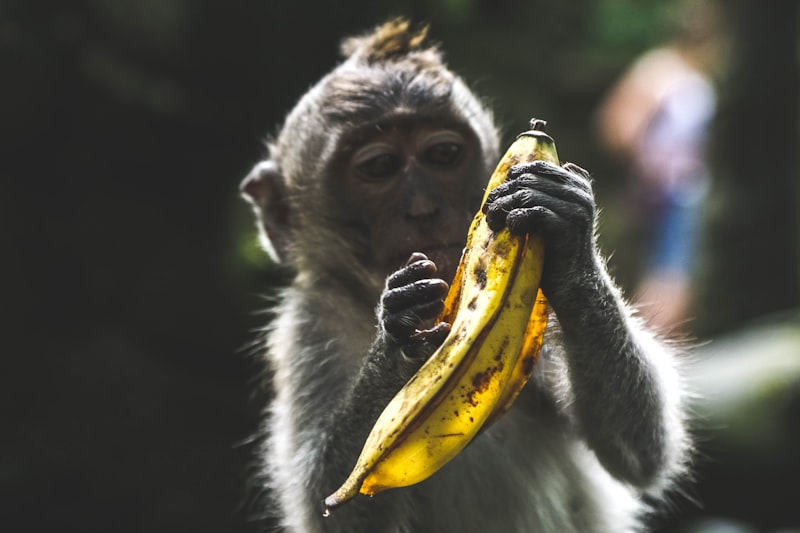
Ever wondered what creatures roamed the Earth millions of years ago, long before humans took their first steps? Prehistoric animals, with their incredible adaptations and sometimes bizarre features, continue to fascinate us today. Let’s dive into some curious facts about these ancient beasts.
Imagine a time when massive creatures like the Megalodon ruled the seas. This prehistoric shark could grow up to 60 feet long, dwarfing even today’s largest great white sharks. Its teeth, some over 7 inches long, were designed for crushing the bones of its prey with ease.
On land, the mighty Tyrannosaurus rex reigned supreme during the late Cretaceous period. Known for its powerful jaws and serrated teeth, this apex predator could devour up to 500 pounds of meat in a single bite. Its name, meaning “tyrant lizard king,” aptly describes its dominance.
But not all prehistoric animals were giants. Take the Archaeopteryx, often referred to as the first bird. This small dinosaur had feathers and wings like modern birds but retained some dinosaur-like features such as teeth and a long bony tail. It bridged the gap between dinosaurs and avian species we see today.
Speaking of bizarre features, the Dunkleosteus, a giant armored fish from the Devonian period, had one of the strongest bites in history. Its sharp bony plates acted like scissors, slicing through prey with remarkable precision. Imagine encountering this armored behemoth in the ancient seas.
In contrast, the woolly mammoth, adapted to the cold climates of the Ice Age, roamed the tundra in herds. With their long, curved tusks and thick fur, these creatures thrived in environments where temperatures dropped below freezing.
These examples only scratch the surface of the diversity and adaptations of prehistoric animals. Each species tells a unique story of evolution and survival in vastly different environments. As we uncover more fossils and study these ancient creatures, we continue to piece together the puzzle of Earth’s incredible natural history.
Unearthed Wonders: 10 Astonishing Facts About Prehistoric Beasts
The Tyrannosaurus Rex, known for its massive size and powerful jaws, reigned supreme during the Late Cretaceous period. With teeth the size of bananas and a bite force that could crush bones, it was truly the apex predator of its time.
Adapted to the harsh conditions of the Ice Age, the Woolly Mammoth roamed the frozen tundra of North America, Europe, and Asia. With its thick fur and impressive tusks, it thrived in a world dominated by ice and snow.
The Triceratops, with its three distinctive horns and frilled head, was one of the last and largest of the horned dinosaurs. It used its horns for defense against predators and possibly in mating rituals, showcasing its dominance in the Late Cretaceous.
The Megalodon, an enormous prehistoric shark, prowled the oceans roughly 23 to 3.6 million years ago. With teeth measuring up to 7 inches long, it was one of the largest and most powerful predators to have ever lived in the sea.
Despite its name, the Sabertooth Tiger was not a true tiger but a remarkable cat with elongated canine teeth. These fearsome weapons, combined with powerful jaw muscles, enabled it to bring down large prey during the Pleistocene epoch.

Diplodocus, with its long neck and tail, was a herbivorous dinosaur that inhabited North America during the Jurassic period. It was one of the longest land animals ever known, reaching lengths of up to 90 feet.
Pteranodon was a giant flying reptile, or pterosaur, that lived during the Late Cretaceous period. With a wingspan of over 25 feet, it soared through the skies on leathery wings, feeding on fish and small prey near ancient coastlines.
Resembling a gigantic armadillo, Glyptodon was a heavily armored mammal that lived in South America during the Pleistocene epoch. Its protective shell could reach lengths of up to 10 feet, providing defense against predators like saber-toothed cats.
Stegosaurus is famous for the series of large bony plates along its back and the spikes on its tail. This herbivorous dinosaur, which lived during the Jurassic period, likely used its tail spikes for defense against predators and rivals.
Smilodon, often referred to as the saber-toothed cat, lived during the Pleistocene epoch in North and South America. With its distinctive long canine teeth, it was a formidable predator that specialized in hunting large herbivores.
These astonishing creatures of the past continue to intrigue scientists and enthusiasts alike, offering a window into a world that existed long before humanity walked the Earth. Their fossils and remains serve as reminders of the diversity and complexity of life that once flourished on our planet.
Journey to the Past: Surprising Discoveries About Ancient Animal Giants
Take, for instance, the awe-inspiring discovery of the Argentinosaurus, a massive herbivore believed to be one of the largest land animals ever known. Picture this behemoth lumbering across prehistoric landscapes, its immense size comparable to a seven-story building. Such revelations not only reshape our understanding of Earth’s ancient ecosystems but also challenge our perceptions of what life was like during the Mesozoic era.
The journey doesn’t end there. Dive into the depths of the oceans and encounter the megalodon, an apex predator whose teeth alone measure up to seven inches in length. This colossal shark ruled the seas with unmatched ferocity, hunting down whales and other large marine creatures with its formidable jaws. The discovery of megalodon fossils continues to spark debates among scientists about its extinction and ecological impact.
As we uncover more about these ancient titans, questions arise. How did they adapt to their environments? What led to their eventual extinction? Each revelation opens a window into Earth’s deep past, offering clues to the dynamics of evolution and the resilience of life itself.
Join us on this journey to the past, where every fossil unearthed tells a story of survival, adaptation, and the relentless march of time. Explore with us as we piece together the puzzle of ancient animal giants, marveling at their size, strength, and the mysteries they left behind for us to uncover.
Beyond Extinction: Fascinating Insights into Prehistoric Creature Behavior
One of the most intriguing aspects of prehistoric creature behavior is their social interactions. Take the mighty Tyrannosaurus rex, for example. While it’s often portrayed as a solitary hunter, recent discoveries suggest that T. rex may have been more social than previously thought. Fossilized trackways indicate that these dinosaurs moved in groups or at least tolerated each other’s presence, hinting at a possible pack mentality similar to modern-day wolves.
Another fascinating insight revolves around parenting behavior among prehistoric creatures. The discovery of nests and eggs belonging to dinosaurs like Maiasaura provides compelling evidence of nurturing behavior. Just imagine these massive creatures carefully tending to their nests, ensuring the survival of their young in a world fraught with dangers.
Furthermore, the dietary habits of prehistoric creatures offer valuable insights into their ecosystems. By analyzing fossilized stomach contents or examining teeth and jaw structures, scientists have pieced together diets ranging from carnivorous to herbivorous and even omnivorous. This information not only sheds light on individual species but also helps reconstruct entire food webs and ecological relationships in ancient environments.
Let’s not forget about the adaptations that allowed these creatures to thrive in vastly different landscapes. From the ability to fly among pterosaurs to the aquatic prowess of marine reptiles like Mosasaurus, each adaptation tells a unique evolutionary story. These creatures weren’t just passive observers of their environments; they actively shaped and responded to challenges through behavioral and physical adaptations.
As we delve deeper into the study of prehistoric creature behavior, each discovery opens new windows into the past, offering a clearer picture of how life on Earth evolved over millions of years. The next time you encounter a dinosaur skeleton or read about a newly unearthed fossil, remember that behind every bone lies a story of survival, adaptation, and the remarkable diversity of life that once thrived on our planet.
Ancient Marvels: 10 Little-Known Facts About Prehistoric Fauna
Have you ever wondered about the incredible creatures that roamed the Earth millions of years ago? Prehistoric fauna, with their majestic sizes and unique adaptations, continue to fascinate scientists and enthusiasts alike. Here are 10 little-known facts about these ancient marvels that will leave you in awe:
-
Megalodon, the Giant Shark: Imagine a shark larger than a school bus! The Megalodon was one of the largest predators to ever exist in the oceans, reaching lengths of up to 60 feet.
-
Saber-Toothed Cats: Contrary to popular belief, saber-toothed cats weren’t actually related to modern-day felines. These fearsome predators used their enormous canine teeth to bring down large prey during the Ice Age.
-
Woolly Mammoths: These iconic creatures were adapted to cold climates with their thick fur and specialized adaptations like small ears to conserve body heat.
-
Pterosaurs, the Flying Reptiles: Not all ancient flying creatures were birds! Pterosaurs had wingspans that ranged from a few feet to over 30 feet, making them the largest flying animals in history.
-
Glyptodon, the Giant Armadillo: Resembling a massive tank, Glyptodon was a heavily armored mammal that lived in South America during the Ice Age.
-
Titanoboa, the Giant Snake: Imagine encountering a snake as long as a school bus! Titanoboa was a colossal serpent that lived in the swamps of South America around 60 million years ago.
-
Smilodon, the Saber-Toothed Cat: With its powerful build and lethal canines, Smilodon was a formidable predator that once prowled the grasslands of North and South America.
-
Dodo, the Flightless Bird: The dodo, famously extinct since the late 17th century, was a large, flightless bird that inhabited the island of Mauritius in the Indian Ocean.
-
Paraceratherium, the Giant Hornless Rhinoceros: Known as the largest land mammal ever to have lived, Paraceratherium stood as tall as 18 feet at the shoulder and weighed up to 20 tons.
-
Dimetrodon, the Sail-Backed Reptile: Despite resembling a dinosaur, Dimetrodon was actually a distant relative of mammals and lived long before dinosaurs emerged.
These ancient marvels showcase the incredible diversity and adaptations of life throughout Earth’s history. Each species has its own unique story, revealing the dynamic nature of evolution and the wonders of our planet’s past.
Frequently Asked Questions
How did prehistoric animals differ from modern species?
Explore how prehistoric animals differed from modern species in terms of anatomy, behavior, and ecological roles through concise comparisons highlighting evolutionary adaptations and environmental contexts.
Where can I see fossils of prehistoric animals today?
Discovering fossils of prehistoric animals is possible in various museums and fossil parks worldwide. Museums like the American Museum of Natural History in New York and the Royal Tyrrell Museum in Alberta, Canada, showcase impressive collections. Additionally, fossil parks such as Dinosaur Provincial Park in Canada offer guided tours to explore ancient remains in their natural settings.
What caused the extinction of many prehistoric animals?
Discover what led to the extinction of numerous prehistoric animals through factors like environmental changes, asteroid impacts, and evolutionary competition. Explore the diverse reasons behind their disappearance in this concise overview.
What were the largest prehistoric animals ever discovered?
Discover the largest prehistoric animals ever found with our concise FAQ. Explore fascinating details about these colossal creatures from ancient times, providing insight into their size, habitats, and scientific significance.
What were some unique adaptations of prehistoric animals?
Discover fascinating adaptations of prehistoric animals, including unique features like the armor-plated body of Ankylosaurus for protection, the long neck of Brachiosaurus for reaching tall vegetation, and the saber-like teeth of Smilodon for hunting prey efficiently.


